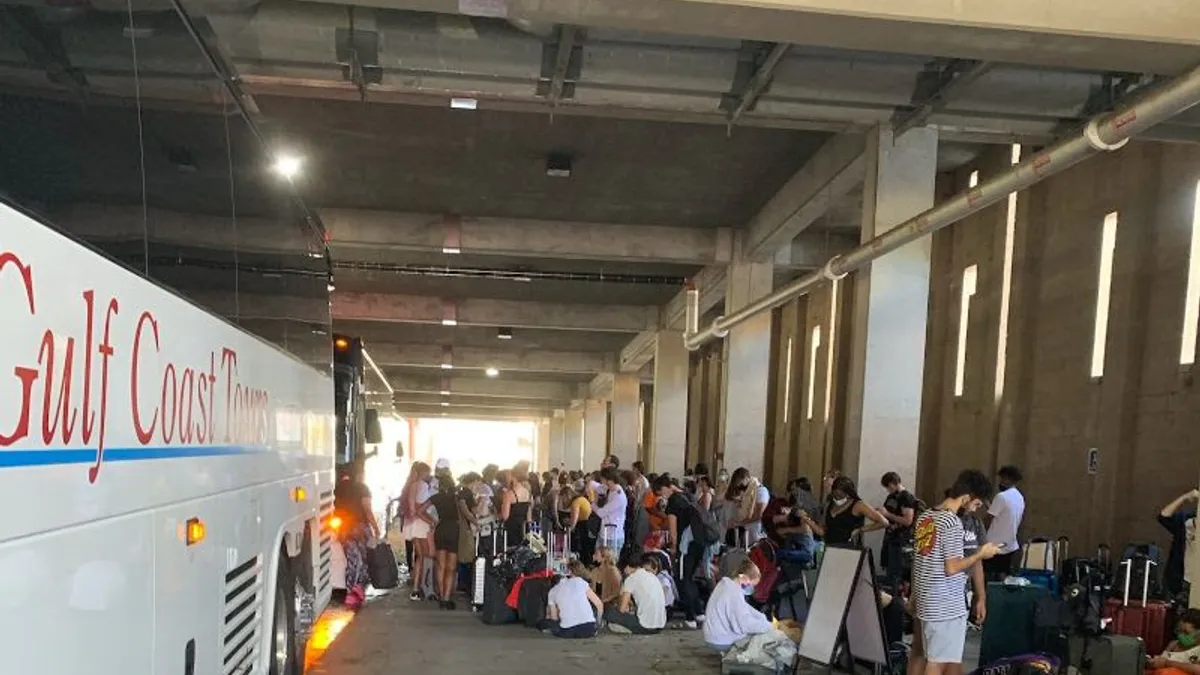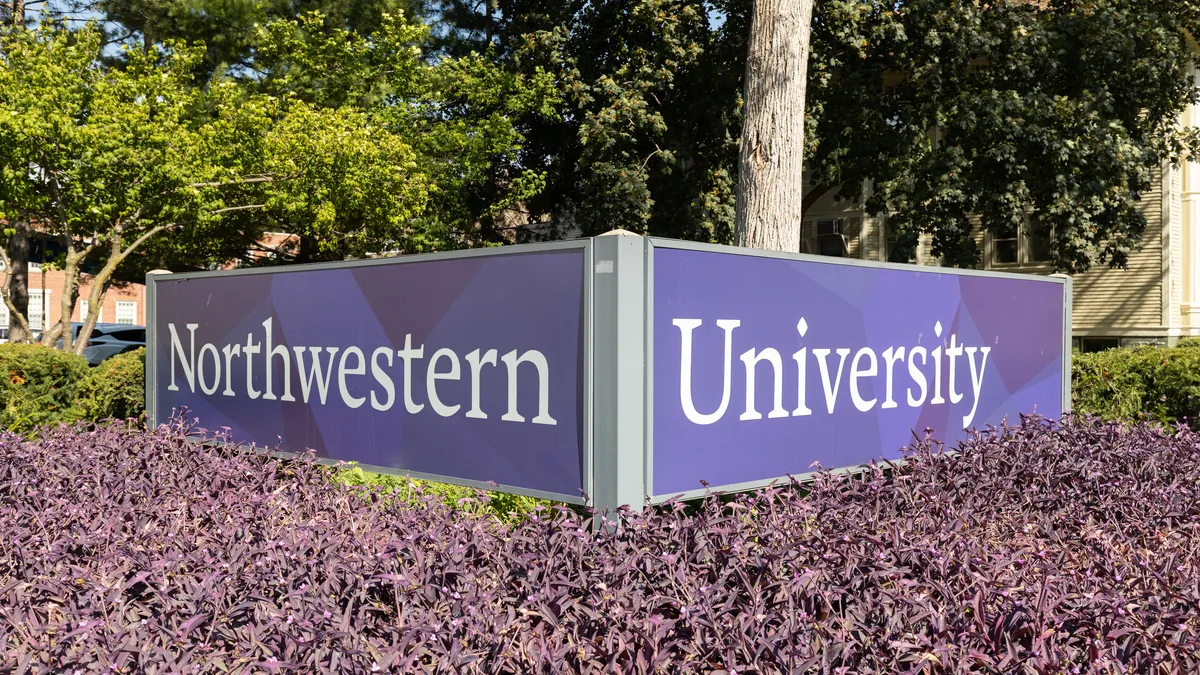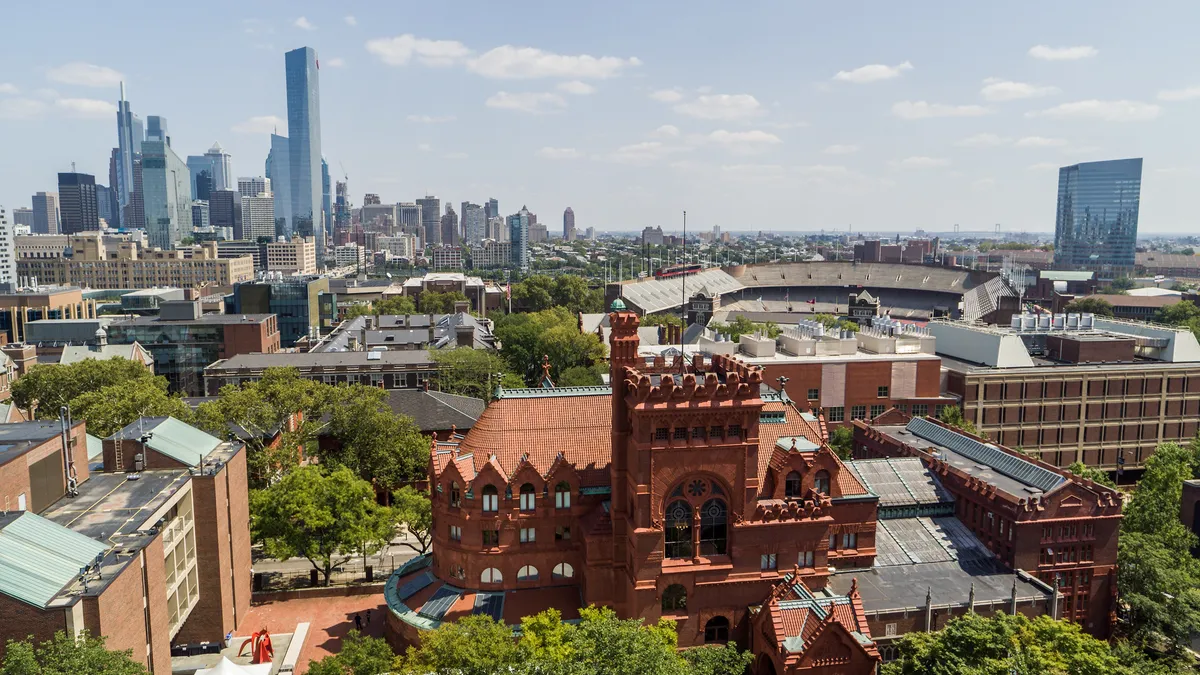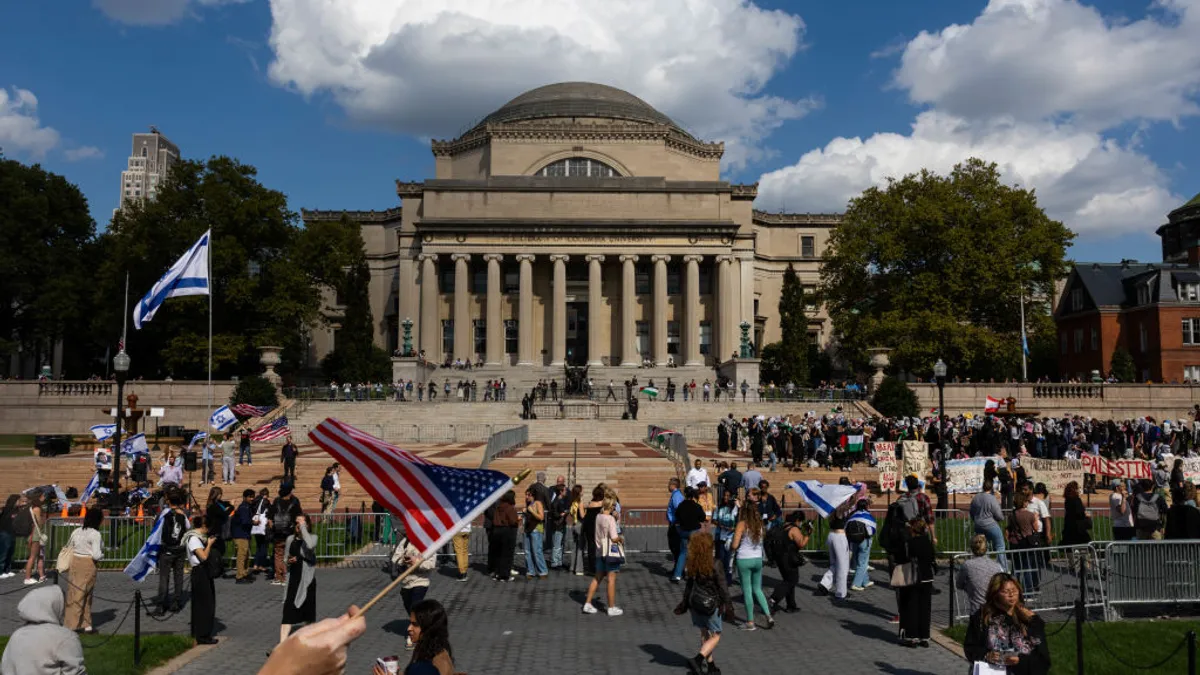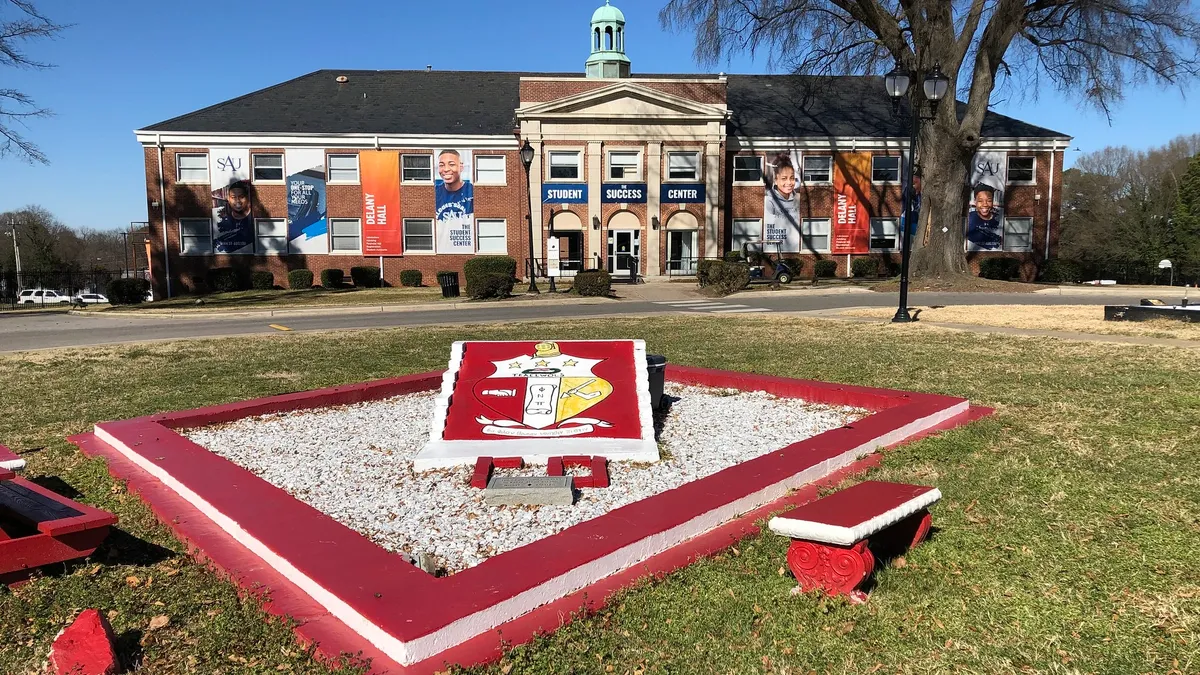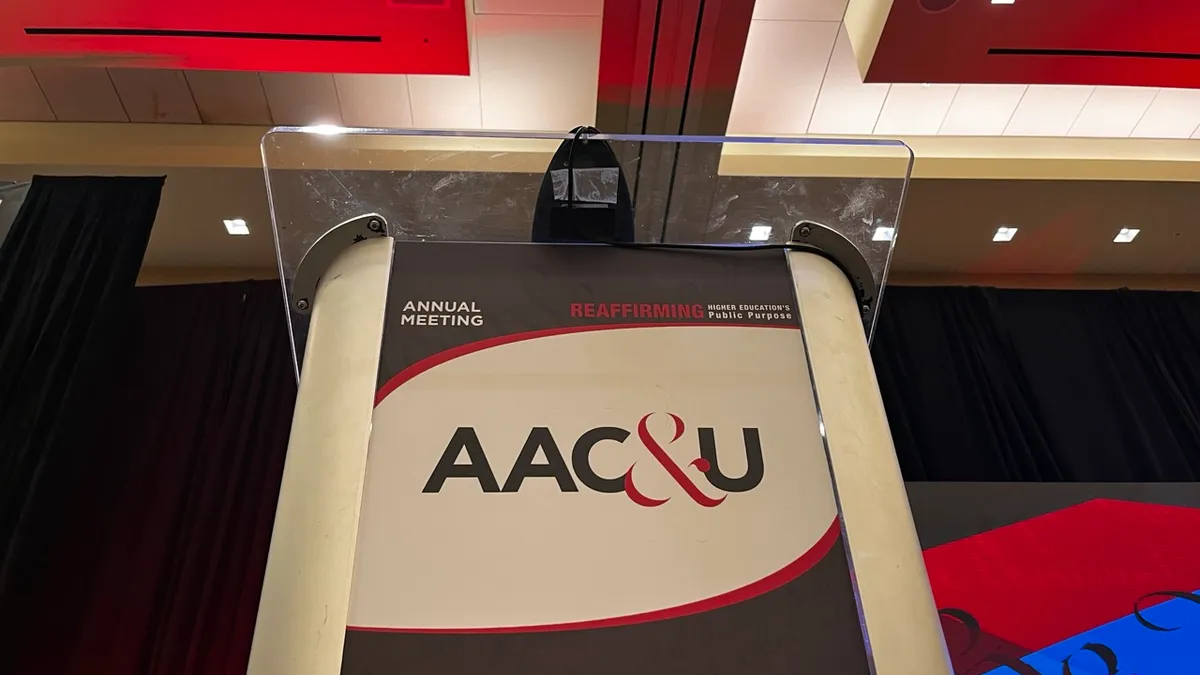Hurricane Ida left destruction and flooding in its wake this week, forcing college closures from the Gulf Coast to the Northeast.
The hurricane's powerful remnants caused damage and severe flooding on campuses in the Mid-Atlantic and Northeast on Wednesday and Thursday, leading several colleges to cancel classes or move them online.
That came after campuses in Louisiana, where the deadly storm made landfall Sunday as a Category 4 hurricane with 150 mph winds, were particularly hard hit. Several New Orleans colleges bused students hundreds of miles to evacuation points in other states and transferred students to housing on sister campuses to escape extended power outages and travel bottlenecks.
Damage and disruptions from the storm highlight how college leaders must prepare for many contingencies — and how even the best-laid plans require flexibility, as emergency planning cannot account for changing variables.
Weeks of disruptions expected in the Gulf
After Ida blew in Sunday, colleges in the New Orleans area generally said their campuses would be closed at least for the week. Several shifted to remote learning through mid-September or later. It isn't clear when power will be restored throughout New Orleans, and airlines have been canceling flights to the city's airport all week.
Dillard University normally plans for Centenary College of Louisiana in Shreveport, a city in the northwest part of the state, to be its evacuation location, Dillard's president, Walter Kimbrough, said in an email. But with the storm's path uncertain, Dillard's leaders worried the hurricane could cause Shreveport to lose power — which happened because of a storm that missed New Orleans last year.
Dillard reached out to a bus company it uses to coordinate evacuation to Shreveport, but no drivers were available. The university encouraged students to go home if possible on the morning of Aug. 27. It set a hard deadline over the weekend for departures so students would not be caught on the road when the storm arrived. Dozens of students sheltered in place in residence halls before moving to an academic building.
A Dillard graduate from Mobile, Alabama, connected the university with someone who could reserve rooms in the city for the university. It evacuated 51 students to Mobile on Tuesday. As of Wednesday, 23 were left at a hotel waiting on flights or making plans with their families. Dillard plans to resume classes online Sept. 13.
Tulane University, another institution in New Orleans, relocated 1,800 students to Houston on Tuesday and planned to transport another 447 there Wednesday, according to a university spokesperson. Classes are canceled through Sept. 12, Tulane administrators announced Monday.
The university restructured its semester to maximize in-person instruction. It will reschedule the two weeks of canceled classes at the end of the semester, resume classes online on Sept. 13 and attempt to return to in-person classes Oct. 11. Officials noted plans may change.
Loyola University New Orleans was running shuttles Tuesday through Thursday with stops at airports in Gulfport, Mississippi, and Mobile so students could catch flights or be picked up by friends or family. The shuttles then go on to Spring Hill College in Mobile, a university spokesperson said. As many as 150 students in a day rode the shuttles. Loyola said it would add shuttles to New Orleans' airport as flights started to return.
Like Dillard students, many at Loyola evacuated before the storm hit. But about 350 remained on campus, which retained power thanks to a generator system, according to the university spokesperson. Loyola will close residence halls temporarily Friday. Loyola students who need temporary housing — including international students, those who live far away, and those whose homes were in the path of the hurricane — will be able to stay at Spring Hill.
Loyola canceled classes for two weeks. It plans to teach virtually the week of Sept. 13 and hopes to resume in-person instruction Sept. 20.
Damage stretches north
The hurricane's remnants wrought damage and disrupted operations as it headed north. Tornado damage prompted Temple University to close its Philadelphia-area Ambler campus Thursday and Friday and cancel in-person classes there. And on Thursday, several institutions in New Jersey canceled classes because of the storms and flooding — including Montclair State University, which canceled in-person classes for the day, and Seton Hall University, which canceled day and evening classes and closed multiple campuses.
Closures stretched into New York, including at the College of Staten Island, which moved in-person classes at its Willowbrook campus online. Meanwhile, the City College of New York said it would close Thursday because of flooding and tree damage that left the campus in "rough shape," according to a campus alert.
Campus leaders said their work isn't over once evacuations are complete. Dillard, for example, will plan for an eastern evacuation site in the future. And it will have to overcome challenges getting students back onto campus when it reopens.
"The return trip to Dillard in a few weeks may possibly be harder for some than the evacuation," Roland Bullard, Dillard's vice president for student success, said in an email. "Resources will be needed to help them come back as many families have not budgeted for a trip back to New Orleans less than a month after the opening of school."



